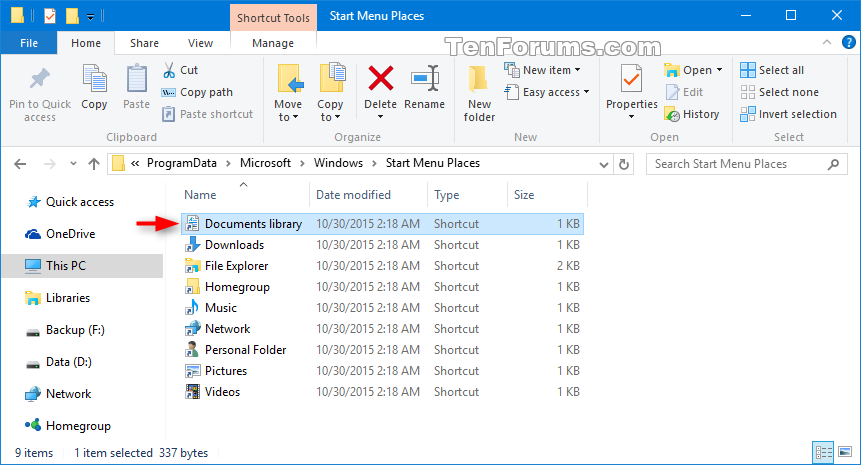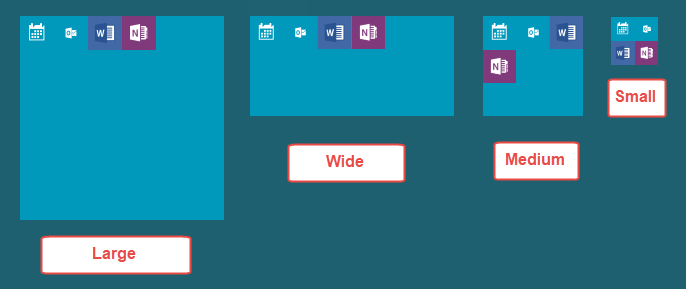
You can of course pin any existing shortcut to the start menu, but very recently I discovered that some shortcuts just can’t be pinned to the taskbar depending on the application. To make this process more clear and easy you can always start with an empty one to gather the XML connected with shortcut piece in detail.įYI. For any other kind of shortcut, just pin it to the start menu by right clicking, then export the start menu layout and look up the pinned shortcut in the above location. Just test it out and of course apply the policies in the right order. in order to make DesktopApplicationID=”F:\” work you will need to create a shortcut with target set as F:\ below path %AppData%\Roaming\Microsoft\Windows\Start Menu\Programs. Same as the start layout policy done by using the Group Policy Editor and best together with the needed drive mappings policies (if you’re not applying them through a GPO yet), because through GPO you can control the drive mapping names as well, which is also used as fast access name when pinning there. In order to be able to add a drive mappings to the start menu you will need to make shortcuts for them first.

The solution for drive mappings in the start menu is fairly simple. I personally think it’s illegal practice as well as abuse of their dominant market position. I’m not surprised anymore after they pulled out the SBS plug a few years ago. Again MS is (ab)using their market monopoly by harshly pushing SMB customers over to cloud solutions like InTune or Enterprise VL’s which both lead to increased monthly costs and of course more profits for M$, because recurring every year.
#Windows 10 start menu folder user windows 10#
Deleting and recreating/restoring the userprofile would take up to 3 hours.Indeed too bad these policies won’t work with Windows 10 Pro. This costs me "only" 80 minutes at this workstation. Right now I am doing a bare metal restore from my network based Veeam Endpoint Storage every time this happens (about 8 times the last 3 months). Maybe this behavior will help someone findig a solution. AND I am able to access the M:\ shares to the admin-server from other computers I am still logged in.Īll shares are on servers with server 2012R2Īfter a reboot the start menu is still dead but the shares are working again. I am still able to access DFS-folders within m:/ that are mapped to shares on other servers. This DFS-Folders (m:\admindata m:\kaspersky ) are mapped to hidden shares on my admin-Server and i should have RW-rights. What I found out is, that this error somehow announces itself.īefore I am no more able to click onto the start menu button without getting this odd error, I cannot access specific mapped DFS-drives/folders any more. I followed all the steps but also without any luck.I am evaluating Win10 for our Company and this is the only problem I couldn't find a fitting workaround for. That might also explain why the Admin and Domain Admin acct Start Menus continue to work, since they're basically at default. Now, that doesn't explain why a new copy of a clean TileDataLayer DB won't fix it (since the Chrome shortcut wasn't on the other accounts), but there may be something else in the profile that ties in somewhere. The shortcut in the Start Menu is somehow version specific, and craps out when the connection between it and the actual Chrome application is broken. Chrome updates in the background without notification.

Here's my guess (and it's just that): There was a shortcut to Chrome on the Start Menu after the System Restore was performed. Chrome was the only program affected by that particular restore point, and once it was out of the way, Start began working again. The Start Menu started working again after I rolled it back past a Chrome update. I rolled it back one point at a time, scanning for affected programs each time before pulling the trigger. May have stumbled across the answer during that process. At this point, I start rolling it back with System Restore, since the Start Menu was working fine last week.

Created a new User acct, verified that I could launch programs from its Start Menu, followed the 6 steps above, still no luck. Tried naming the entire TileDataLayer folder to "old", no luck. Tried renaming the DB folder to "old", no luck. I've followed the steps above to no avail. Banging my head against the wall on this one.


 0 kommentar(er)
0 kommentar(er)
